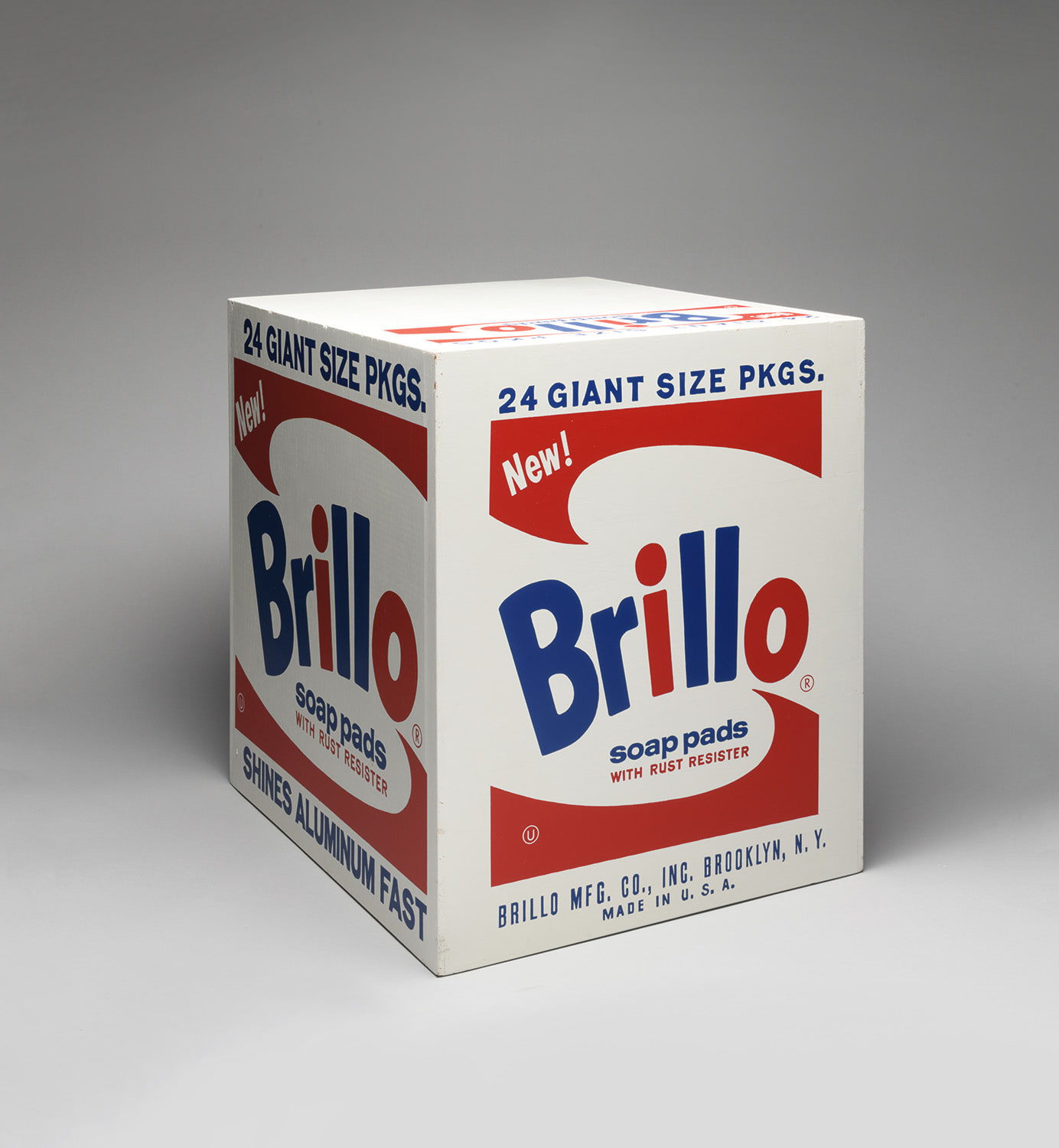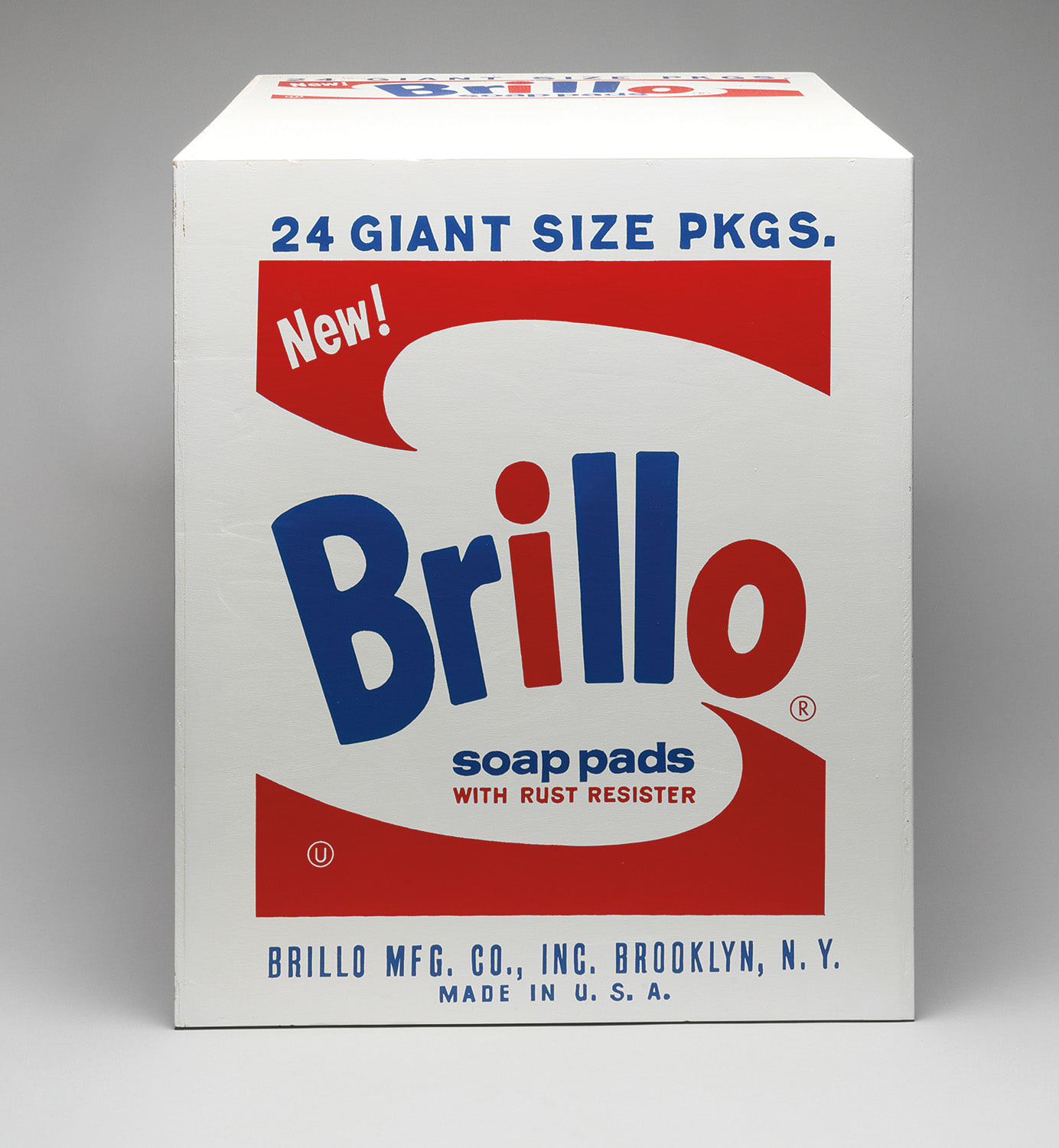



224
Andy Warhol
Brillo Soap Pads Box (Pasadena Type)
Full-Cataloguing
Before Andy Warhol, the thought of creating, or even recognizing, as sculpture, something that resembled a cardboard carton used for shipping consumer goods, would have been inconceivable. Gerard Malanga, Warhol’s long-time assistant recounts, “Andy was fascinated by the shelves of foodstuffs in supermarkets and the repetitive, machine-like effect they created” (Gerard Malanga, Archiving Warhol: Writing and Photographs, New York, 2002, p. 94). Expanding the subject matter of his earlier Campbell’s Soup Can paintings into the sculptural realm, Warhol created wooden facsimiles of cartons of Brillo Soap Pads, Mott’s Apple Juice, Del Monte Peach Halves, Campbell’s Tomato Soup, Kellogg’s Cornflakes, and Heinz Tomato Ketchup. Warhol first exhibited his revolutionary series of box sculptures at Manhattan’s Stable Gallery in 1964. Massed floor to ceiling, the wooden sculptures transformed the exhibition space into, what appeared as, a supermarket stockroom. The dazzling show became a rallying point for both those for and against Pop art; as Robert Indiana remembers, “The most striking opening of that period was definitely Andy’s Brillo Box Show” (Robert Indiana, quoted in Victor Bockris, Warhol: The Biography, Cambridge, 2003, p. 198).
The most iconic of the box sculptures, the Brillo Boxes came to represent a period of revolutionary transformation in Warhol’s oeuvre. The first body of work to come from his East 47th Street studio, the box sculptures were constructed by craftsmen to Warhol’s specifications; Warhol and his assistants then painted and silkscreened the wooden boxes with stencils taken from the original grocery cartons. This new process, suggestive of an assembly line, would come to define Warhol’s brand. The production of this seminal body of sculptures, with their sheer quantity and their typology as packages, provides a context in which Warhol’s legendary studio came to be known as The Factory. Eight years after the groundbreaking show at Stable Gallery, Warhol produced a new series of Brillo Boxes, known as the Pasadena-type boxes, a series in which the present lot belongs, for his retrospective at the Pasadena Art Museum.
Andy Warhol
American | B. 1928 D. 1987Andy Warhol was the leading exponent of the Pop Art movement in the U.S. in the 1960s. Following an early career as a commercial illustrator, Warhol achieved fame with his revolutionary series of silkscreened prints and paintings of familiar objects, such as Campbell's soup tins, and celebrities, such as Marilyn Monroe. Obsessed with popular culture, celebrity and advertising, Warhol created his slick, seemingly mass-produced images of everyday subject matter from his famed Factory studio in New York City. His use of mechanical methods of reproduction, notably the commercial technique of silk screening, wholly revolutionized art-making.
Working as an artist, but also director and producer, Warhol produced a number of avant-garde films in addition to managing the experimental rock band The Velvet Underground and founding Interview magazine. A central figure in the New York art scene until his untimely death in 1987, Warhol was notably also a mentor to such artists as Keith Haring and Jean-Michel Basquiat.